Welcome to a fascinating journey through time, as we explore the history of watercolor painting and the various styles and movements that have shaped this beloved art form. Watercolor painting has a rich history that spans centuries and transcends geographical boundaries, with each period introducing new techniques, approaches, and artistic visions.
As a watercolor enthusiast or an aspiring artist, it’s essential to understand these different styles and movements to appreciate the full spectrum of watercolor artistry and draw inspiration for your work.
In this blog post, we will delve into the origins of watercolor painting and trace its development through critical historical periods and movements. So, let’s embark on this captivating exploration and discover the stories behind the art that has captured our hearts and imagination.
Early Watercolor Techniques and the Renaissance
The roots of watercolor painting can be traced back to ancient civilizations, but during the Renaissance, watercolor started to gain prominence as a distinct art form. During this period, artists began experimenting with new pigments, techniques, and artistic expressions, giving rise to a rich and diverse array of watercolor styles.
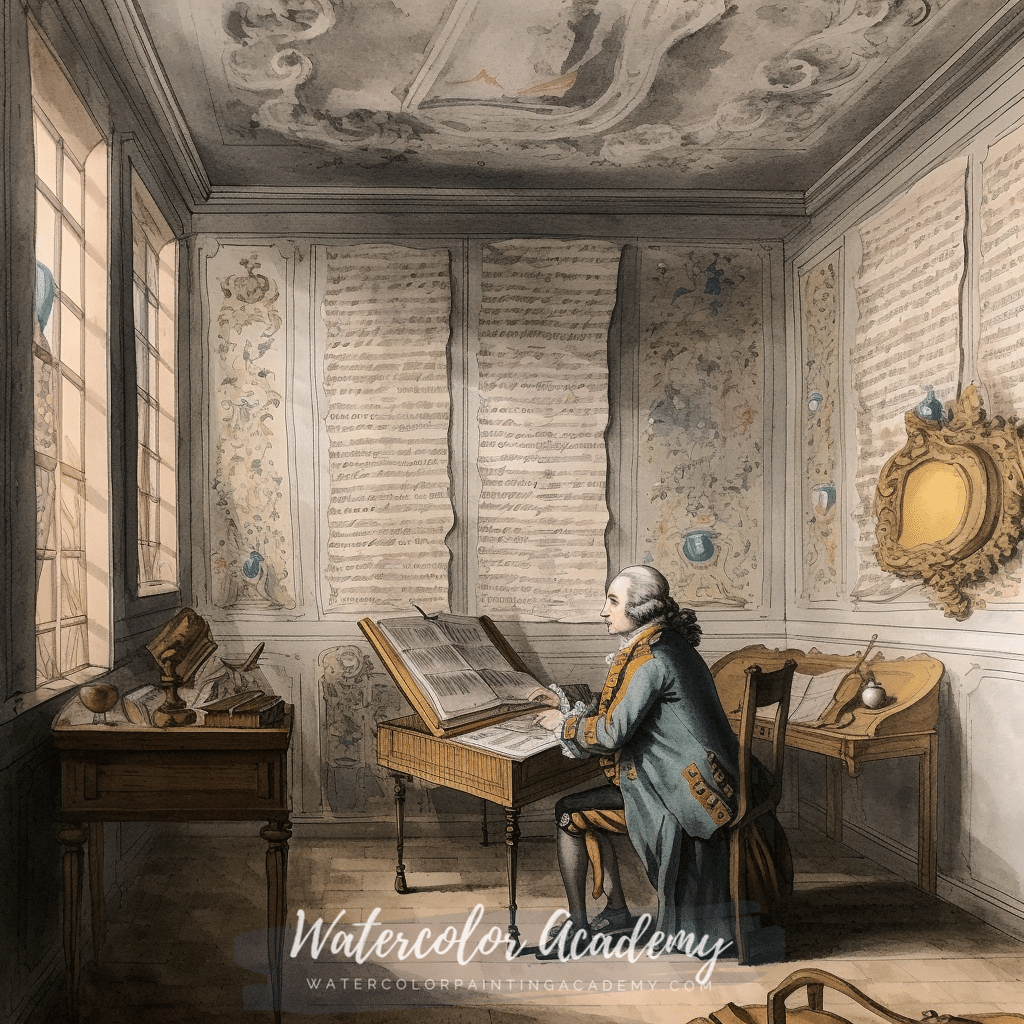
Manuscript Illumination and Early Watercolors
Before the Renaissance, watercolor was primarily used for manuscript illumination – a decorative art form that involved hand-painting illustrations and embellishments on parchment or vellum. These early watercolors were made from pigments ground and mixed with water and a binder, such as gum Arabic or egg white. Some of the most famous illuminated manuscripts, like the Book of Kells, showcase the intricate detail and vibrant colors achievable with watercolor.
The Renaissance and Watercolor Innovations
The Renaissance was a time of significant artistic and intellectual growth, with numerous advancements in painting techniques and materials. Many artists of this period, including Albrecht Dürer and Leonardo da Vinci, began to experiment with watercolor as a medium for sketching and studies, as it allowed for quick, spontaneous brushwork and easy corrections.
Watercolor also proved to be an ideal medium for capturing the subtleties of light and atmosphere, which were of great interest to Renaissance artists. This period saw the introduction of new pigments, such as ultramarine and vermilion, which expanded the range of colors available to artists and further fueled the development of watercolor techniques.
During the Renaissance, watercolor was primarily used for studies and preparatory work, with oil painting being the preferred medium for finished pieces. However, the skills and techniques honed by artists during this period would lay the foundation for watercolor’s future growth and popularity as an independent art form.
The Golden Age of Watercolor in England
The Golden Age of Watercolor in England occurred during the late 18th and early 19th centuries. This period saw a surge in the popularity of watercolor painting, thanks to its affordability and the growing availability of high-quality art materials. It also became a popular medium for artists to explore landscapes, which were a significant genre in English art during this time.
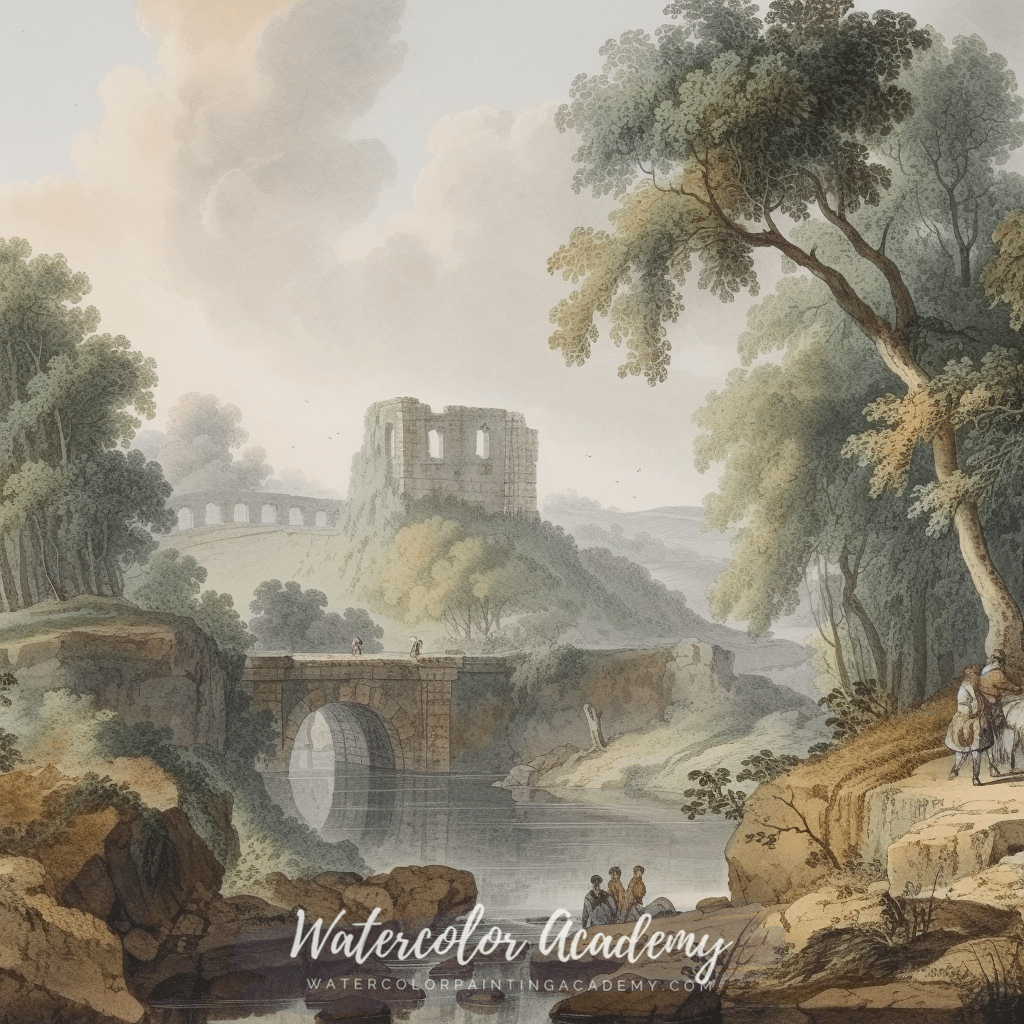
Prominent Artists of the Golden Age
During the Golden Age, several prominent artists emerged, contributing to the development and recognition of watercolor as a respected art form. Some key figures include:
- Thomas Gainsborough (1727-1788): Gainsborough was an influential landscape painter who often used watercolor to create picturesque scenes. His work displayed a delicate touch and an ability to capture the atmosphere of the English countryside.
- John Robert Cozens (1752-1797): Cozens was known for his atmospheric landscapes, often featuring sublime and sad scenes. His innovative use of color and light helped define the Romantic style in watercolor.
- J.M.W. Turner (1775-1851): Turner was a prolific artist and a master of watercolor techniques. His work covered various subjects, from landscapes to seascapes and historical events. Turner’s unique approach to color and light inspired future generations of artists, including the Impressionists.
- John Constable (1776-1837): Constable was another influential figure during this period, known for his naturalistic landscapes. He used watercolor to explore the effects of light and color, capturing the English countryside’s distinct atmosphere.
The Impact of the Golden Age on Watercolor
The Golden Age of Watercolor in England played a significant role in establishing watercolor as a respected art form. The artists from this period showcased the versatility of the medium, demonstrating that it could be used for various subjects and styles.
Moreover, the Golden Age helped solidify the notion of watercolor as a medium uniquely suited for capturing the fleeting effects of light and atmosphere. This idea would later be explored further by the Impressionists and other artists who sought to capture the essence of their subjects through color and light.
The American Watercolor Movement
The American Watercolor Movement emerged in the mid-19th century, fueled by a growing interest in watercolor painting and the establishment of watercolor societies. This movement significantly impacted the development of watercolor art and helped raise its status in the United States.
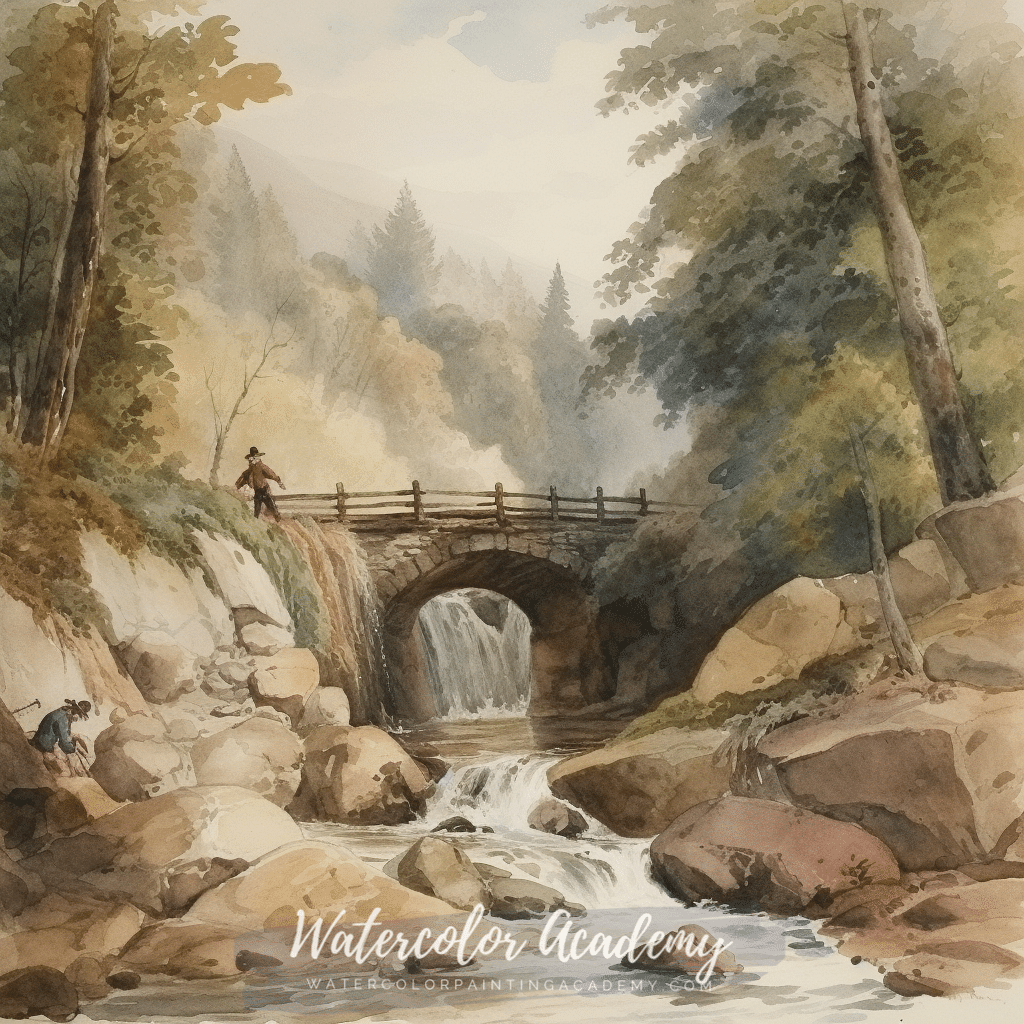
The Birth of the Movement
In the early 1800s, watercolor was considered a lesser medium, primarily used for sketches and studies. However, as American artists traveled to Europe and encountered the thriving watercolor traditions there, they began to embrace the medium and develop their unique styles. The American Watercolor Movement truly took off with the founding of the American Watercolor Society in 1866. This organization aimed to promote watercolor painting, support artists, and organize exhibitions.
Key Artists and Characteristics
Numerous talented artists contributed to the flourishing of the American Watercolor Movement, including:
- Winslow Homer (1836-1910): Known for his mastery of color and light, Homer’s watercolor paintings often depicted scenes from nature, rural life, and the sea.
- John Singer Sargent (1856-1925): Celebrated for his portraits, Sargent was also a prolific watercolorist, capturing landscapes, architecture, and people with fluid, expressive touch.
- Georgia O’Keeffe (1887-1986): O’Keeffe’s watercolors, though less famous than her oil paintings, showcased her bold use of color and her ability to simplify forms.
The American Watercolor Movement was characterized by an emphasis on direct observation, experimentation with color and texture, and a desire to capture the unique beauty of the American landscape.
The Movement’s Legacy
The American Watercolor Movement played a significant role in elevating the status of watercolor as a legitimate artistic medium. The contributions of these artists inspired future generations to explore the potential of watercolor, and their influence can still be seen in contemporary watercolor painting today.
The Influence of Impressionism and Post-Impressionism
As we journey further into the history of watercolor painting, we come across the Impressionist and Post-Impressionist movements, which significantly impacted the watercolor world. These artistic movements, originating in France in the late 19th and early 20th centuries, were characterized by their unique approaches to color, light, and brushwork.
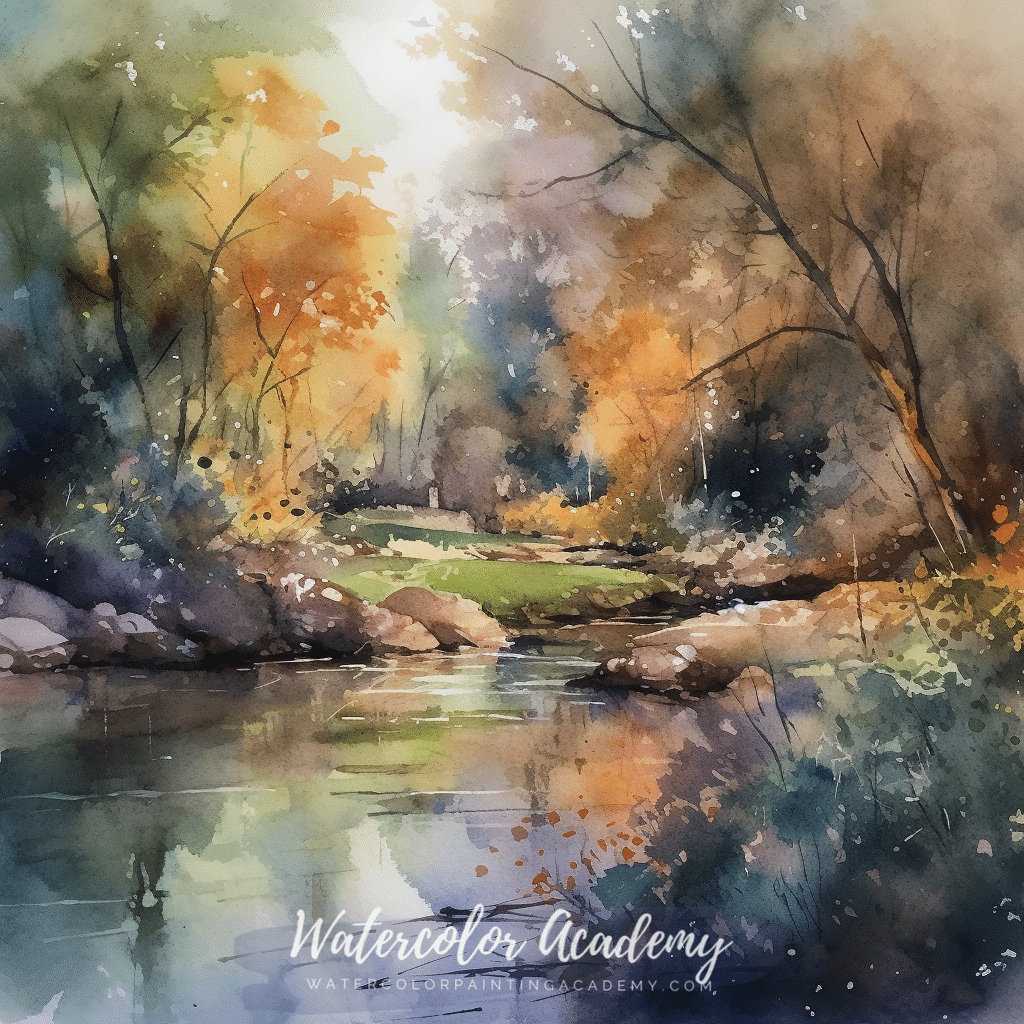
Impressionism
The Impressionists, including renowned artists such as Claude Monet, Pierre-Auguste Renoir, and Edgar Degas, sought to capture fleeting moments and the ever-changing effects of light in their works. In watercolor, this translated to a looser, more spontaneous style, with less emphasis on fine detail and more on the interplay of colors and the atmosphere of the scene.
Impressionist watercolor artists often used wet-on-wet techniques, allowing colors to blend and flow on the paper. This created a soft, dreamy appearance, perfectly suited to the Impressionist goal of capturing the essence of a scene rather than a photorealistic representation.
Post-Impressionism
Post-Impressionism followed the Impressionist movement, featuring artists such as Vincent van Gogh, Paul Cézanne, and Paul Gauguin. While these artists retained some of the Impressionist focus on light and color, they also sought to bring more structure, form, and emotion to their work.
In watercolor, this led to a more diverse range of styles and techniques, with some artists favoring a more controlled approach to color and brushwork, while others continued to experiment with looser, more expressive styles. The Post-Impressionist movement saw a greater emphasis on the individual artist’s vision, paving the way for future artistic movements and the continued evolution of watercolor painting.
Modern Watercolor Techniques and Abstract Expressionism
As the art world entered the 20th century, watercolor painting experienced a significant shift in style and approach. Modern watercolor techniques emerged, influenced by a growing interest in abstract art and the desire to explore new artistic possibilities. The Abstract Expressionism movement began in the 1940s and was vital in shaping modern watercolor painting.
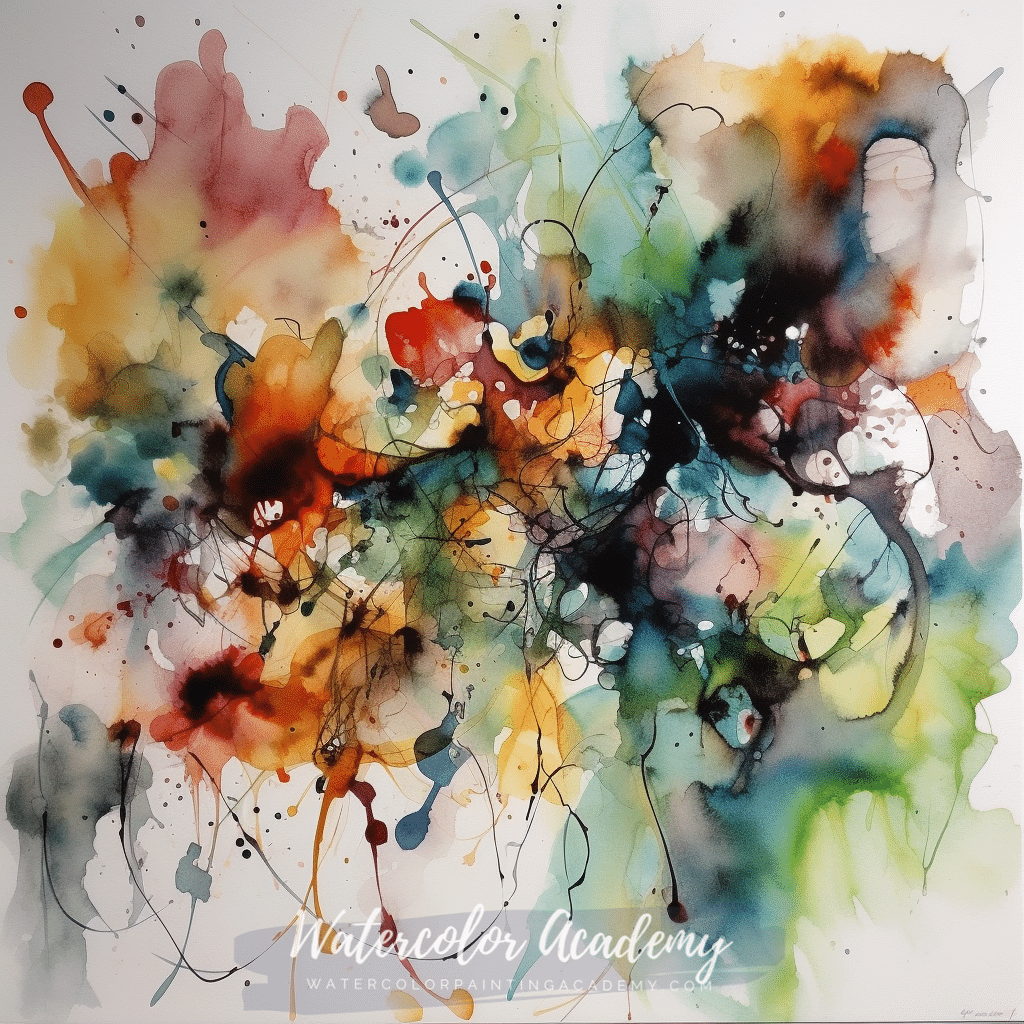
Abstract Expressionism and Watercolor
Abstract Expressionism was characterized by its focus on emotional expression, spontaneity, and the use of bold colors and dynamic brushstrokes. Artists like Jackson Pollock, Mark Rothko, and Willem de Kooning sought to break away from traditional artistic conventions and create innovative ways to use watercolor paints. They often incorporated mediums like ink or pastel to create mixed media pieces with unique textures and effects.
Essential Techniques in Modern Watercolor
Modern watercolor techniques embraced the principles of Abstract Expressionism, emphasizing the importance of individual expression and experimentation. Some essential techniques include:
- Wet-on-wet painting: This technique involves applying wet paint to a wet surface, allowing colors to blend and merge organically on the paper.
- Layering: Modern watercolor artists often use multiple layers of paint to create depth, texture, and complex color combinations.
- Drips and splatters: Inspired by Pollock’s famous “drip paintings,” many modern watercolor artists incorporate drips and splatters to create a sense of movement and spontaneity.
- Non-traditional tools: Modern watercolorists often experiment with unconventional tools, such as sponges, palette knives, or even their fingers, to create unique effects and textures.
Influence on Contemporary Watercolor Painting
The impact of modern watercolor techniques and Abstract Expressionism can still be seen in contemporary watercolor art. Today’s artists continue to push the boundaries of the medium, exploring new ways to create expressive, abstract, and experimental works.
In the next chapter, we’ll delve into contemporary watercolor styles and artists, discussing how they continue to build upon the legacy of the historical watercolor movements.
Contemporary Watercolor Styles and Artists
In recent years, watercolor painting has continued to evolve and diversify, with contemporary artists pushing the boundaries of the medium and developing new techniques. This chapter highlights some of the most innovative watercolor styles and artists working today.
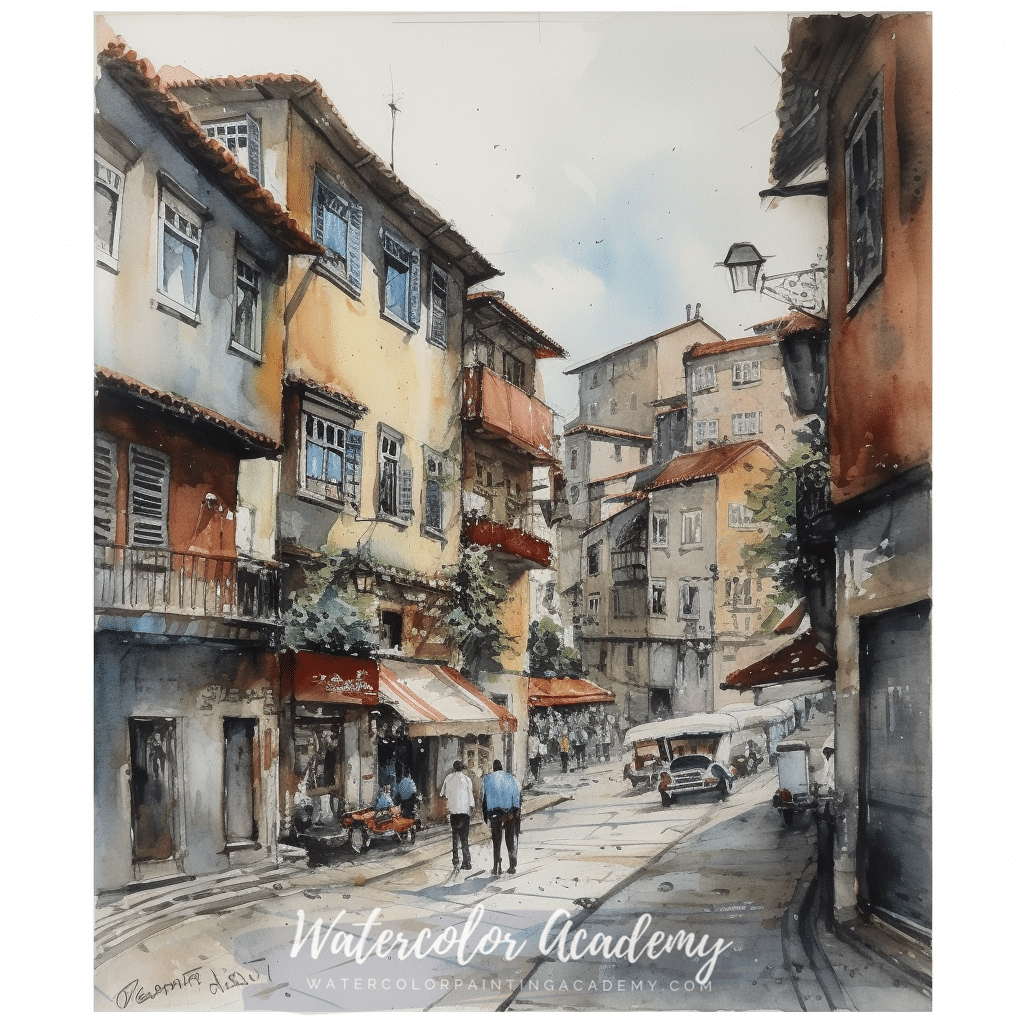
Experimental Techniques and Mixed Media
Modern watercolor artists often experiment with new techniques and materials, incorporating mixed media elements into their work. They may use unconventional surfaces like wood or canvas or integrate collage, ink, and digital elements to create unique effects and textures.
The Urban Sketching Movement
Urban sketching is a contemporary art movement that encourages artists to capture the world around them through on-location watercolor sketches. This plein-air approach to watercolor painting has gained popularity recently, with artists sharing their work on social media and through local and global urban sketching communities.
Portraiture and Figure Painting
While portraiture and figure painting have long been associated with watercolor, contemporary artists are reinterpreting these subjects with fresh perspectives and innovative techniques. Some focus on capturing the essence of their subjects through loose, expressive brushstrokes, while others create highly detailed, realistic renderings.
Abstract Watercolor
Abstract watercolor painting allows artists to explore the properties of the medium itself, such as color, shape, and texture. Many contemporary artists are pushing the boundaries of traditional watercolor techniques, creating large-scale, dynamic abstract compositions that blur the lines between painting and sculpture.
Notable Contemporary Watercolor Artists
Here are some noteworthy contemporary watercolor artists, each with their unique style and approach to the medium:
- Eudes Correia is known for his expressive urban scenes and portraits, capturing the emotions and stories of everyday people with a loose, gestural style.
- Jean Haines is a renowned British watercolorist whose work features vibrant colors and fluid, organic shapes. Her paintings often depict nature, animals, and human figures.
- Stina Persson is a Swedish artist who combines watercolor with other media, such as ink and acrylic, to create striking, fashion-inspired illustrations.
As the watercolor world evolves, these contemporary styles and artists demonstrate the medium’s versatility and rich artistic heritage.
Conclusion: The Enduring Legacy of Watercolor Movements
Throughout history, watercolor painting has continued to evolve and captivate audiences with its unique qualities and expressive possibilities. The various styles and movements we explored in this blog post demonstrate the incredible versatility of this medium and its ability to adapt to changing artistic trends.
From the early beginnings in the Renaissance, through the golden age of English watercolor, and onto the modern and contemporary styles, watercolor has remained a popular choice for artists who seek to create visually striking and emotionally resonant artworks. The different movements have each contributed to developing new techniques and approaches to watercolor painting, pushing the boundaries of what can be achieved with this medium.
As we continue to explore and appreciate the rich history of watercolor, it’s important to remember that these artistic movements and styles are not just a thing of the past. Contemporary artists continue to draw inspiration from historical watercolor styles, blending them with their unique vision to create innovative and exciting new artworks.
In conclusion, the history of watercolor painting is a testament to the enduring appeal of this medium and its ability to adapt and evolve. By understanding and appreciating the various styles and movements that have shaped the course of watercolor art, we can gain a greater appreciation for the creative potential of this versatile medium and be inspired to experiment with our artistic expression.



